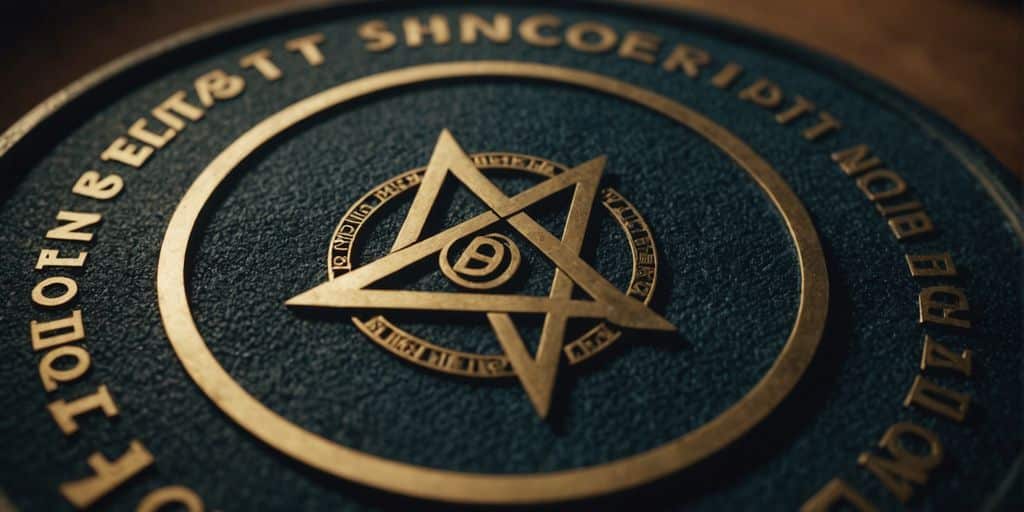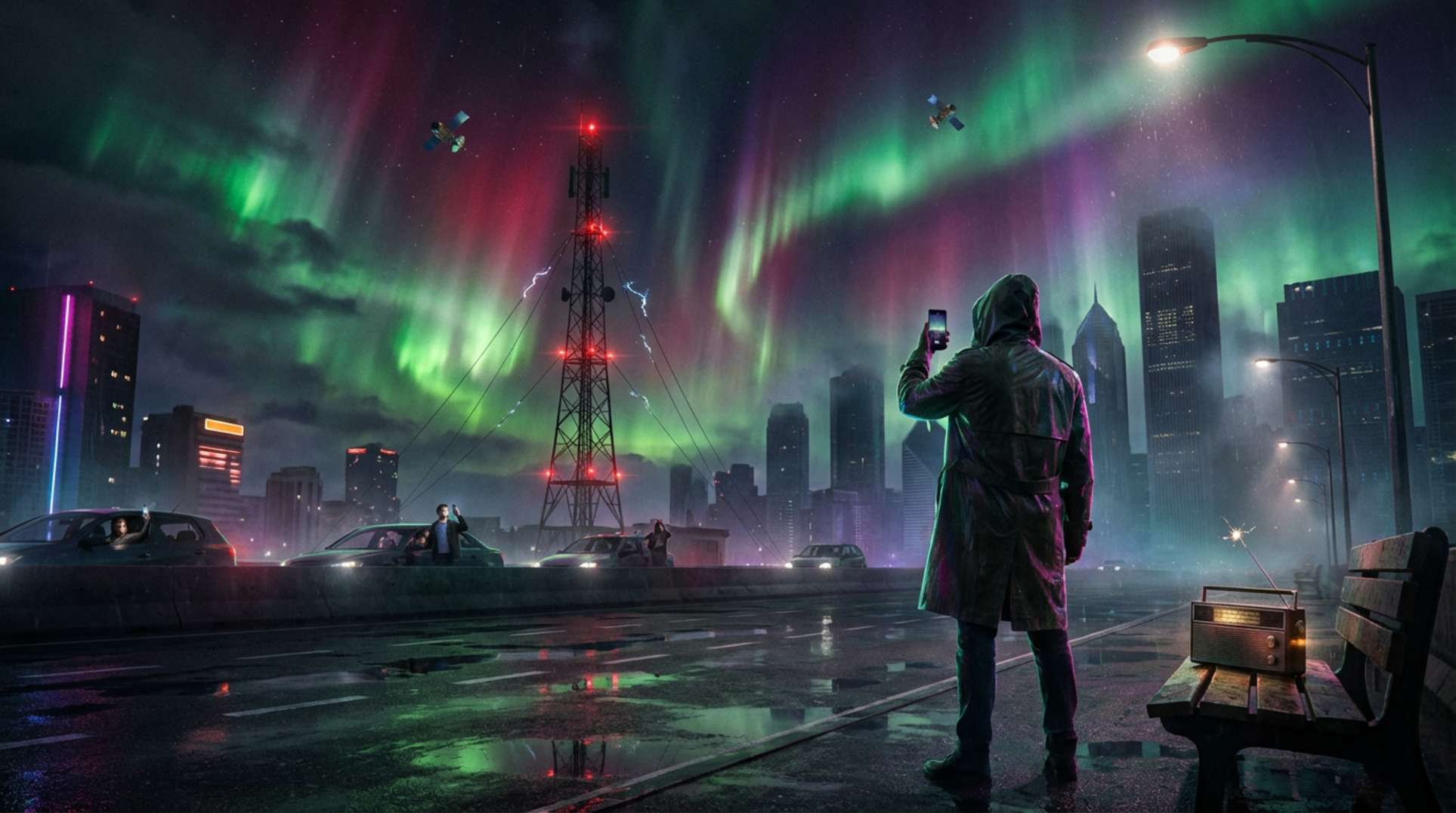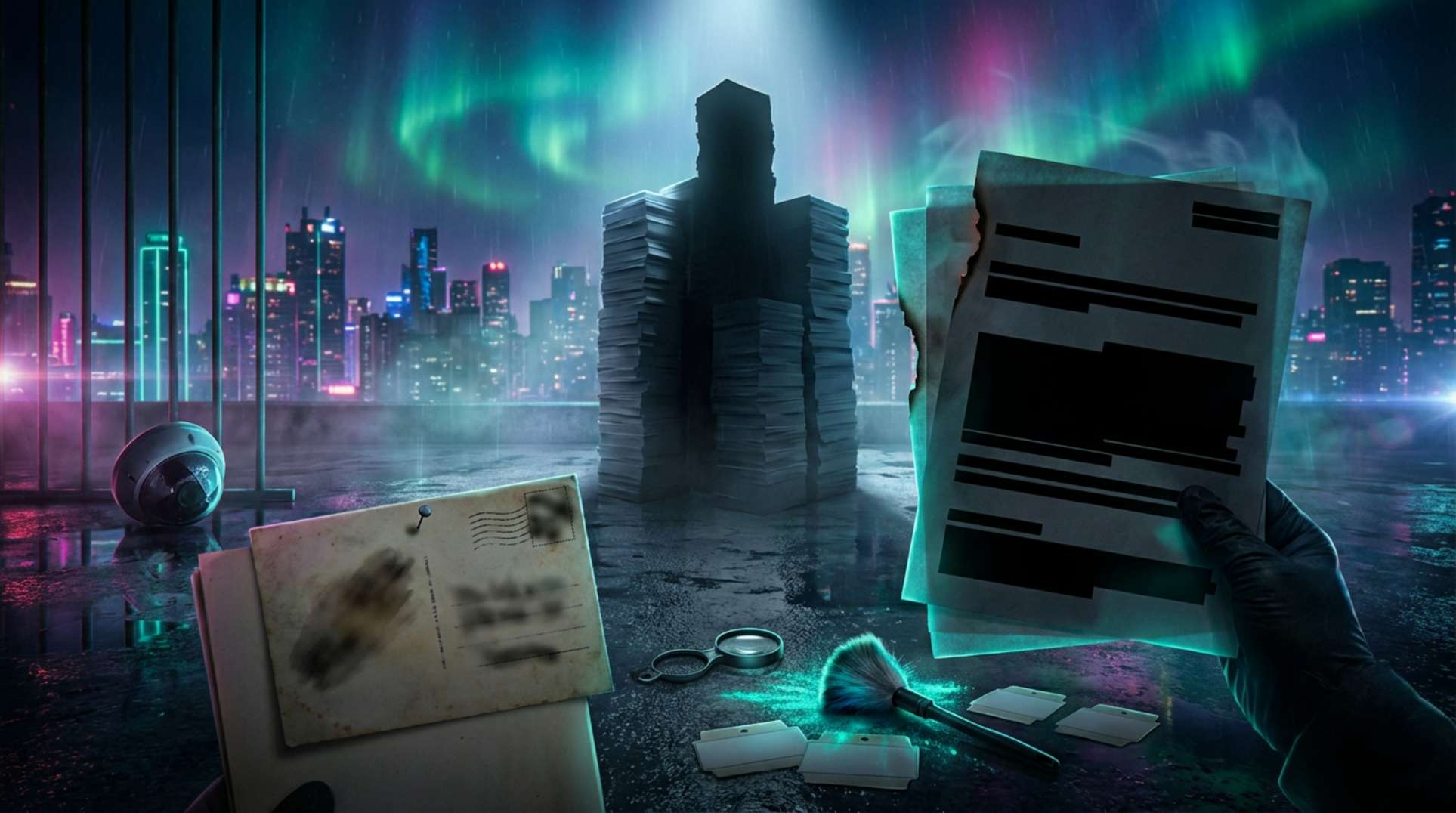Secret societies have always fascinated people. These groups, often hidden and mysterious, have sparked countless stories and conspiracy theories. From ancient times to the modern day, secret societies have played various roles in history, sometimes influencing major events and other times remaining in the shadows. This article explores the origins, purposes, and impacts of these elusive groups.
Key Takeaways
- Secret societies have existed since ancient times, often emerging during periods of social change or stress.
- The Illuminati, founded in 1776, aimed to challenge religious and state power but was disbanded in the late 1780s.
- Freemasonry, with roots in medieval stonemason guilds, has influenced many historical figures and events.
- Secret societies have played roles in political movements like the American and French Revolutions.
- Modern secret societies continue to intrigue and inspire conspiracy theories, reflecting their enduring mystery.
The Origins and Purits of Secret Societies
Secret societies have been around for a long time, with their roots stretching back to ancient times. These groups often keep their activities, events, and membership hidden from the public. The allure of secrecy has always been a key part of their mystique.
The Illuminati: Separating Fact from Fiction
The Illuminati was founded by Adam Weishaupt in Bavaria on May 1, 1776. Weishaupt, a professor, was frustrated with the power of the conservative Catholic Church and the Bavarian monarchy. He wanted to replace organized religion with a new form of "illumination" through reason. Inspired by the Enlightenment, he drew ideas from the Jesuits, the Mysteries of the Seven Sages of Memphis, the Kabbalah, and the Freemasons. He recruited heavily from the Freemasons, infiltrating their lodges to enlist some of the wealthiest and most influential men in Europe.
Members of the Bavarian Illuminati, known as "Perfectibilists," were divided into three tiers of increasing power. They included societal elites like noblemen and writers. All communication was in cipher, and members were given classical nicknames. The organization flourished before being stamped out by Karl Theodor of Bavaria, who issued an edict making membership punishable by death in 1787. Despite its short existence, the Illuminati has been linked to various historical events, from the French Revolution to the assassination of JFK.
The Illuminati continues to captivate the public imagination. Conspiracy theories suggest they are behind many global events, aiming to create a "new world order." These theories have been fueled by popular culture, including books like Dan Brown’s "Angels & Demons." While the original Illuminati was suppressed, the idea of a secret group controlling world affairs persists, blending fact and fiction in the minds of many.
The allure of secret societies is part mystery, part legend. Separating fact from fiction is crucial to understanding their true impact on history.
Freemasons: The Builders of Secrecy
Freemasonry has its roots in the guilds of stonemasons and cathedral builders of the Middle Ages. These craftsmen traveled from city to city, identifying each other through unique signs and symbols. The first Grand Lodge was established in London in 1717, marking the formal beginning of modern Freemasonry.
Freemasons are known for their secretive rituals and symbols. The most recognizable symbol is the Square and Compasses, often accompanied by the letter ‘G,’ which some interpret as representing God or Geometry. These symbols and rituals have fascinated and mystified outsiders for centuries.
Freemasonry has had a significant impact on society, particularly in the United States. Many of the Founding Fathers, including George Washington and Benjamin Franklin, were Freemasons. Their influence extended to the framing of the U.S. Constitution and the design of the nation’s capital.
Freemasonry’s blend of mystery and tradition continues to captivate the public imagination, making it one of the most enduring secret societies in history.
The Role of Secret Societies in Political Movements
American Revolution
Secret societies played a significant role in the American Revolution. Groups like the Sons of Liberty were instrumental in organizing resistance against British rule. They used covert meetings and secret codes to plan actions such as the Boston Tea Party. These societies provided a way for revolutionaries to communicate and coordinate without detection. Their influence extended to key figures like Samuel Adams and Paul Revere, who were members of these clandestine groups.
French Revolution
In France, secret societies like the Jacobins and the Grand Orient Lodge were pivotal during the French Revolution. These groups fostered revolutionary ideas and provided a network for like-minded individuals. They held secret meetings to discuss strategies and disseminate revolutionary propaganda. The Jacobins, in particular, were known for their radical views and played a crucial role in the Reign of Terror.
Russian Revolution
The Russian Revolution also saw the involvement of secret societies. The Bolsheviks, led by figures like Lenin and Trotsky, operated in secrecy to avoid detection by the Tsarist regime. They used underground networks to spread their message and recruit members. The Bolsheviks’ clandestine activities were essential in their eventual success in overthrowing the government and establishing a communist state.
Secret societies have often been the hidden hands behind major political movements, providing a means for revolutionaries to organize and execute their plans without interference.
The Thule Society and Hitler’s Rise to Power
The Thule Society began as a small secret group in Germany at the end of the 19th century. It was one of many smaller secret societies that emerged during this period. The society was named after Thule, a mythical land in the far north, which they believed to be the origin of the Aryan race. Members of the Thule Society were deeply interested in Germanic mythology and the occult. They believed in the superiority of the Aryan race and were strongly nationalistic.
The Thule Society played a significant role in shaping the beliefs of the early Nazi Party. Many of its members, including Rudolf Hess and Alfred Rosenberg, became prominent figures in the Nazi movement. The society’s emphasis on Aryan superiority and its anti-Semitic views were adopted by the Nazis. The Thule Society also introduced Hitler to the idea of using secret-society methods to achieve political goals, such as using symbols and rituals to create a sense of unity and purpose among members.
The Thule Society’s influence on Nazi ideology and methods had a lasting impact on history. While the society itself faded into obscurity, its ideas lived on through the actions of the Nazi Party. The use of symbols, rituals, and the promotion of Aryan superiority became central to Nazi propaganda. The Thule Society’s legacy is a reminder of how secret societies can shape political movements and leave a lasting mark on history.
The Thule Society’s blend of mythology, nationalism, and occultism created a powerful and dangerous ideology that contributed to one of the darkest chapters in human history.
Synarchy and Vichy France: Hidden Hands in History
Economic Crisis and Political Turmoil
The 1930s were marked by economic crisis and political instability. This period saw the rise of authoritarian regimes and the decline of democratic institutions. Many wondered if these events were mere coincidences or if there was a hidden hand at work. The concept of Synarchy, which suggests that a secret elite was manipulating political events, gained traction during this time.
Synarchy’s Influence
Synarchy’s influence was particularly noted in Vichy France. The idea was that a group of powerful individuals were working behind the scenes to control the government and society. This theory suggested that these elites were orchestrating events to maintain their power and influence, often at the expense of democratic principles.
The Business Plot of 1934
In the United States, the idea of Synarchy also appeared in the form of the Business Plot of 1934. This alleged conspiracy involved wealthy businessmen plotting to overthrow President Franklin D. Roosevelt and establish a fascist regime. While the plot was never proven, it added to the aura of mystery and suspicion surrounding secret societies and their potential impact on political events.
The notion of a hidden hand manipulating political events continues to captivate the imagination, raising questions about the true extent of secret societies’ influence on history.
The Rosicrucians: Mysticism and Modernity
Origins and Beliefs
The Rosicrucians, an early modern period mystical order in Europe, have long fascinated those interested in secret societies. Their origins are shrouded in mystery, with tales of ancient wisdom and hidden knowledge. The Rosicrucians claimed to possess esoteric truths that could transform individuals and society. Their beliefs combined elements of alchemy, mysticism, and spiritual enlightenment. Central to their practice was the idea of personal transformation and the pursuit of hidden knowledge.
Cultural Impact
The Rosicrucians influenced many aspects of culture, from literature to art. Their ideas inspired numerous works, including the famous "Fama Fraternitatis," which called for a reformation of mankind. The Rosicrucian practice of the backward review, a nightly reflection on one’s day, examining actions and thoughts, is one of their notable contributions to personal development. This practice aimed to foster self-awareness and spiritual growth.
Modern Interpretations
Today, the Rosicrucians continue to captivate the imagination. Modern groups claiming Rosicrucian heritage often focus on spiritual development and esoteric studies. They offer courses and materials on topics ranging from meditation to ancient wisdom. While some view these modern interpretations as a continuation of the original order, others see them as a commercialized version of the mystical tradition. Regardless, the Rosicrucians’ legacy of seeking hidden truths and personal transformation endures.
The Mafia: Criminal Secret Societies
Origins and Structure
The Mafia, often romanticized in movies and TV shows, is a real and dangerous criminal organization. It began in Italy, particularly in Sicily, and later spread to other parts of the world, including the United States. The Mafia is known for its strict hierarchy and code of silence, known as omertà. Members are often bound by blood ties and loyalty, making it difficult for outsiders to infiltrate.
Notable Figures and Events
Throughout history, the Mafia has been associated with numerous notorious figures and events. Al Capone, one of the most infamous mobsters, ruled Chicago’s underworld during the Prohibition era. Another key figure was Lucky Luciano, who helped establish the modern American Mafia. The Mafia’s involvement in the St. Valentine’s Day Massacre and the assassination of anti-Mafia crusader Judge Giovanni Falcone are just a few examples of their violent history.
Modern-Day Influence
Today, the Italian-American Mafia cooperates in various criminal activities with Italian organized crime groups, such as the Sicilian Mafia and the Camorra. Despite law enforcement efforts, the Mafia continues to have a significant impact on society. They are involved in illegal activities like drug trafficking, extortion, and money laundering. The Mafia’s influence extends beyond crime, affecting politics and business in subtle but powerful ways.
The Mafia’s ability to adapt and survive through decades of law enforcement crackdowns is a testament to their deep-rooted influence and organizational skills.
Debunking Myths: The Protocols of the Elders of Zion
Origins and Fabrication
The Protocols of the Elders of Zion is a fraudulent document that served as a pretext and rationale for anti-Semitism mainly in the early 20th century. It was first published in Russia in 1903 and falsely claimed to be a record of a secret Jewish plan for global domination. The document was quickly debunked, but its impact was already widespread.
Impact on Society
Despite being exposed as a hoax, the Protocols had a significant impact on society. They were used to justify anti-Semitic policies and actions, particularly in Nazi Germany. The document fueled hatred and violence, leading to tragic consequences for Jewish communities around the world.
Modern Repercussions
Even today, the Protocols continue to be cited by conspiracy theorists and hate groups. They have been translated into multiple languages and are still used to spread anti-Semitic propaganda. The persistence of this myth highlights the ongoing challenge of combating misinformation and prejudice.
The Protocols of the Elders of Zion remain a powerful example of how false information can be weaponized to incite hatred and violence. It is a stark reminder of the importance of critical thinking and media literacy in today’s world.
Aleister Crowley: Occultism and Espionage
Aleister Crowley, often dubbed "the wickedest man in the world," was born in 1875 in England. From a young age, he showed a keen interest in mysticism and the occult. Crowley was a prolific writer and founded the religion of Thelema, which emphasized the pursuit of one’s true will. His early life was marked by rebellion against his strict religious upbringing, leading him to explore various esoteric traditions.
Crowley’s involvement in secret societies began with his initiation into the Hermetic Order of the Golden Dawn. He later joined the Ordo Templi Orientis (O.T.O.), where he rose to a high rank. Crowley’s influence extended beyond these groups, as he founded his own order, the A∴A∴, which focused on spiritual enlightenment through rigorous training and rituals. His work in these societies often blurred the lines between mysticism and espionage.
Aleister Crowley’s legacy is a complex tapestry of occultism, literature, and espionage. He was rumored to have worked as a spy for British intelligence during World War I, using his travels and connections to gather information. Crowley’s writings on magic and mysticism have left a lasting impact on modern occult practices. His life and work continue to fascinate and inspire those interested in the esoteric and the mysterious.
Crowley’s enigmatic life, filled with both occult practices and alleged espionage activities, makes him a figure of enduring intrigue and speculation.
Japan’s Black and Green Dragons: Nationalism and Crime
Origins and Activities
The Black Dragons, also known as the Black Dragon Society, were a nationalistic organization in Japan. They aimed to inform the Japanese people of their rights to dominate the world. This group had close ties with the Japanese crime syndicate, the yakuza. The Black Dragons were involved in various activities, including espionage and political manipulation, to push Japan towards militarism and fanaticism.
Impact on Japanese Society
The influence of the Black Dragons on Japanese society was significant. They played a crucial role in promoting extreme nationalism and militarism, which eventually led to Japan’s involvement in World War II. Their activities were not limited to Japan; they also had a presence in other countries, spreading their ideology and engaging in covert operations.
Connections to the Yakuza
The Black Dragons had a strong connection with the yakuza, Japan’s notorious organized crime syndicate. This relationship allowed them to carry out their activities with a level of impunity. The yakuza provided the muscle and resources needed for the Black Dragons to achieve their goals. This collaboration between a nationalistic group and a criminal organization created a powerful and dangerous alliance.
The Black Dragons’ influence in pushing Japan into fanaticism, militarism, and a devastating war cannot be overstated. Their legacy is a stark reminder of how secret societies can shape the course of history.
Bohemian Grove, Bilderbergers, and Modern Elites
Origins and Membership
Bohemian Grove is a secluded campground in California where some of the world’s most powerful men gather annually. The club, founded in 1872, includes past attendees like U.S. presidents and business magnates. Membership is highly exclusive, and the activities are shrouded in secrecy.
The Bilderberg Group, established in 1954, aims to foster cooperation between Europe and North America. Meetings are by invitation only, with around 120-140 attendees, including politicians, academics, and business leaders. The group’s name comes from the Hotel de Bilderberg in the Netherlands, where the first meeting was held.
Activities and Influence
At Bohemian Grove, members engage in various activities, from theatrical performances to policy discussions. The most famous event is the "Cremation of Care," a ceremony meant to symbolize the casting off of worldly concerns.
The Bilderberg Group’s meetings are equally secretive, with discussions held under the Chatham House Rule, meaning participants can use the information but not reveal the identity of the speakers. Topics often include global issues like cybersecurity and climate change.
Conspiracy Theories
Both Bohemian Grove and the Bilderberg Group have been the subject of numerous conspiracy theories. Some believe these gatherings are where global policies are secretly decided. The Trilateral Commission, another elite group, is often mentioned in the same breath, adding to the aura of mystery and suspicion.
The secrecy surrounding these groups fuels public curiosity and speculation, making them a focal point for conspiracy theories.
While the true extent of their influence remains debated, what is clear is that these gatherings continue to captivate the public imagination. The blend of secrecy, power, and exclusivity ensures that Bohemian Grove and the Bilderberg Group remain subjects of fascination and speculation.
Conclusion
Secret societies have always sparked curiosity and debate. From the ancient mystery cults to modern-day organizations, their influence on history and culture is undeniable. While some see them as shadowy groups pulling the strings behind the scenes, others view them as harmless clubs with unique traditions. Whether fact or fiction, the allure of secret societies continues to captivate our imaginations. As we peel back the layers of secrecy, we find that these groups often reflect the hopes, fears, and complexities of the societies they emerge from. In the end, the true power of secret societies may lie not in their hidden agendas, but in the stories and myths they inspire.
Frequently Asked Questions
What is a secret society?
A secret society is a group or organization that keeps its activities, membership, and sometimes even its existence hidden from non-members.
Are secret societies real?
Yes, secret societies are real and have existed throughout history. Some well-known ones include the Freemasons, the Illuminati, and the Knights Templar.
What is the Illuminati?
The Illuminati was a secret society founded in 1776 in Bavaria by Adam Weishaupt. It aimed to promote Enlightenment ideals and reduce the influence of religion in public life.
Do secret societies control the world?
While secret societies have had influence in various historical events, there is no concrete evidence to support the claim that they control the world.
How do you join a secret society?
Joining a secret society typically involves a selective process, including recommendations from current members, and an initiation ceremony.
What are the Freemasons?
The Freemasons are a fraternal organization that traces its origins to the local fraternities of stonemasons in the late 16th and early 17th centuries. They are known for their secret rituals and symbols.
Did secret societies influence political movements?
Yes, secret societies have been linked to various political movements, including the American Revolution and the French Revolution.
Are there secret societies today?
Yes, secret societies still exist today. While their influence may not be as overt as in the past, they continue to operate in various fields such as business, politics, and academia.




